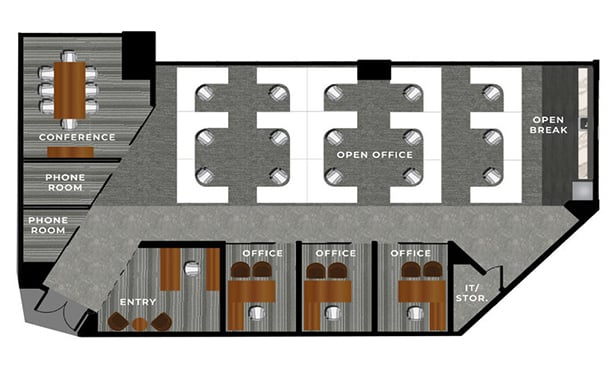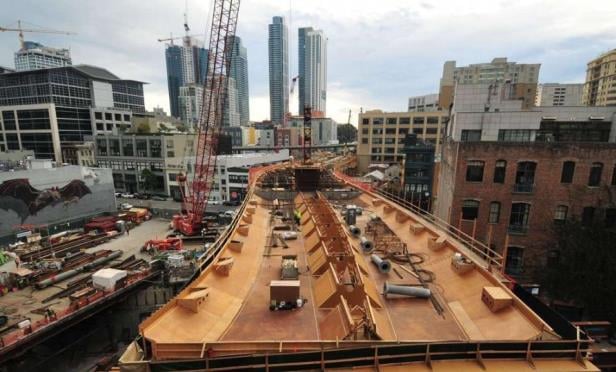JOPLIN, MO—On May 22, 2011, one of the deadliest tornadoes in US history descended on the Missouri city of Joplin and demolished St. John's Mercy Regional Medical Center. As reported in GlobeSt.com, McCarthy Building Companies, Inc. was then hired to replace it with the 890,000 square-foot Mercy Hospital Joplin. And next week, about three years after the project began, patients will begin to arrive, but this time they will have a hospital that provides far more protection and is far more likely to remain operational in the event of another weather disaster.
Early on in the project's design phase, officials from the St. Louis-based McCarthy began poring over the latest standards from FEMA and the National Institute of Standards and Technology to see what their options were for hardening the building and then deciding “what made sense from a financial standpoint,” McCarthy project director Ryan Felton tells GlobeSt.com.
“In medical circles, there is a lot of talk about 'never' events—referring to things that should never happen in a hospital, like a surgeon operating on the wrong limb—but there is one 'never' event that is harder to control: a hospital full of patients should never be reduced to rubble in a matter of minutes,” he says. “That is the motivation behind our efforts in Joplin, which aim to not only keep occupants alive during an EF-5 tornado, but actually keep the hospital operational after the event.”
The new facility has 205 rooms and includes a nine-story hospital patient tower and five-story clinic tower. It houses units including medical surgical, critical care, labor, delivery, recovery and postpartum rooms, neonatal intensive care, behavioral health and rehab. Architectural firms HKS, Inc. and Archimages, and MEP engineer Heideman & Associates also worked on the project.
The developers ended up focusing a lot on the building's exterior and “what didn't withstand the storm” on the former hospital, Felton says. Most importantly, the new structure has windows of laminated glass that can withstand high winds, and rooms meant for immobile patients have windows that can withstand wind loads of up to 250 miles an hour. And on the exterior façade, the builders used 8 x 10-inch precast panels. “We knew it was more durable than a brick veneer system.”
Felton concedes that it's nearly impossible to make any building completely disaster proof, but McCarthy has made changes so Mercy Hospital can continue to care for its patients even if struck by a tornado. For example, the company built an underground utility tunnel twenty to thirty feet below grade that provides power and water. And a 30,000 square-foot central utility plant was built partially underground and recessed into a hillside 450 feet away. The old hospital had much of its key infrastructure above grade, he adds. “Those utilities were the first things wiped out by the tornado.”
Felton estimates that the cost of protecting Mercy from future weather disasters was about 3% of the project's total value. That relatively low cost has sparked interest from a host of potential users, he says. “You'd be surprised at how many clients in Tornado Alley have reached out to us.”
Continue Reading for Free
Register and gain access to:
- Breaking commercial real estate news and analysis, on-site and via our newsletters and custom alerts
- Educational webcasts, white papers, and ebooks from industry thought leaders
- Critical coverage of the property casualty insurance and financial advisory markets on our other ALM sites, PropertyCasualty360 and ThinkAdvisor
Already have an account? Sign In Now
© 2024 ALM Global, LLC, All Rights Reserved. Request academic re-use from www.copyright.com. All other uses, submit a request to [email protected]. For more information visit Asset & Logo Licensing.








